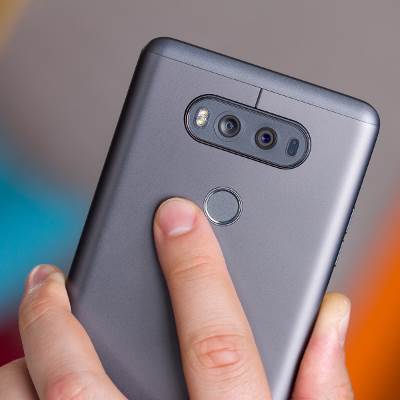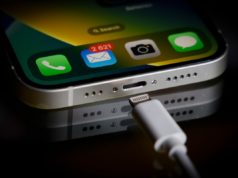If you ask us what’s the absolute best Android device available on the market at the moment, we’d have a tough time choosing between two entrants – with the Galaxy Note 7 out of the way, our choice narrows down to the LG V20 and the Google Pixel XL.
Both are easily the most feature-rich devices you can get right now. In particular, the LG V20 is quite an intriguing handset that is building on the overall strong foundation established by either the LG V10 and the LG G5 — with a full metal body, a replaceable battery, dual cameras at the rear, and exceptional multimedia capabilities, it’s indubitably a phone that raises eyebrows in a good way.
With the dual camera at the back being one of the highlights of the phone, we thought that it deserves a closer look. Hence, we came up with a camera interface walkthrough of sorts, which will show you the ropes of the different bells and whistles.
The basics
Now, for starters, anyone who’s taken a shot or two with the LG G5 or the V10 will feel just at home with the V20, since the two employ generally the same layout and features with a few notable exceptions. Straight out of the bat, the V20’s camera will greet you with a relatively straightforward and intuitive UI that’s easy to get used to. Unsurprisingly, by default will let you shoot in its auto mode since that’s what most users will shoot in the most. On the left sidebar, you can access some of the more frequently-used features, like enabling/disabling the flash, switching between front and rear cameras, utilizing a photo filter, choosing a shooting, and finally, tweaking the camera’s settings.
While it’s not visible in the screenshot up above, you can switch between Auto, Manual photo, and Manual video modes by tapping the corresponding icons that will be present on the V20’s secondary screen. Up top, you can see the buttons that allow you to switch between the regular and the wide-angle cameras. On the right side of the camera interface, you will see a shortcut to your gallery, followed by two shutters – a smaller one for video and a larger one for capturing regular pics.
Holding and pressing the shutter lets you capture pics in burst mode. However, this feature only works if no camera effect has been applied.
Another intriguing feature that’s a bit “hidden” is the V20’s ability to switch between the two cameras automatically. You can do so by zooming out when you’re using the regular camera – after a brief hiccup, the handset will switch to the wide-angle lens. Zooming in from that one will respectively switch to the regular camera (no escaping the small hiccup here, too). You can do that in video, too, but the switching causes a rather unpleasant stutter to appear in your otherwise pristine video.
The camera modes
The camera modes of the LG V20 are similar to the ones found on the G5 and we have no problem with that. Truth be told, you will use a few of these more than others. For example, Popout and Multi-view are interesting for a couple of minutes, but we highly doubt that you will be using these two on the regular. The first one uses both cameras to create a nifty collage, with the regular camera shooting the main image and the wide-angle one responsible for the background of your collage. You can have the latter blurred, vignetted, fish-eyed, or in black & white and come up with a nifty collage, but in the end of the day, you’ll probably forget about that one once the novelty wears off.
Multi-view is а more regular type of collage you can shoot with the V20 – you can select between a couple of layouts as well as choose which camera to fire for any of the frames of your photo collage. For example, you can have the rear wide-angle camera snap the picture in the upper left corner, the regular one to shoot the top right one, and switch between the two selfie camera modes for the remaining frames on the bottom row. You can mix these up to your liking and unleash your imagination.
The rest of the camera modes are more traditional. You get Panorama, Slo-mo, and Time-lapse, which are pretty much self-explanatory. The last of the bunch is Snap, a Vine-like feature that lets you shoot short 3-second videos for convenient sharing on social media.
Additionally, you’ve got 8 different camera filters to choose from, ranging from the good ol’ sepia to a bunch of other filters that you will probably use from time to time if that’s your thing. We usually don’t use any filters – taking a regular picture and editing it afterward with Snapseed or Adobe Lightroom gives you greater control over the properties of the image.
Manual photo mode
Manual camera controls are truly one of the biggest strengths of LG V20’s camera. As we said before, you can easily switch between auto and manual photo/video by tapping the corresponding button on the secondary display. That’s rather neat if you ask us. Have in mind that you can shoot manual with both cameras, but due to the narrower F2.4 aperture of the wide-angle camera you’d likely be better off with the regular F1.8 one.
So, what can you tinker with in manual camera mode? In manual mode, you can meddle with all the essential camera settings, like the white balance, manual focus, the exposure value, and most importantly, the ISO and the shutter speed. You can also shoot in RAW and edit the lossless image file on your desktop later. Locking the focus and exposure is a feature that we also used regularly. You can also enable a neat histogram that lets you “review” the exposure of the shot you’re about to take. All in all, the manual mode interface setup is rather intuitive, leaving nothing to the imagination and making you guess what each button does.
You can also use manual controls with the wide-angle camera, but we are not sure why you would do that – it’s a bit underspec’d when compared to its regular peer. Still, it allows for some creative shots.
So, why should you use manual camera controls? Well, for superior control over your camera, of course! While Auto does its job just fine, in certain scenarios you might want to have a bigger say in how your photos turn out.
For example, in certain low-light scenarios, you might want to circumvent the automatic camera settings and utilize low ISO with slow shutter speed for better-looking, grain-free pictures. You can also ‘freeze’ moving objects in place by combining high ISO with fast shutter speed; we suspect that in the same scenario auto mode will produce a photo that’s mostly a blurry mess. Of course, there are many other scenarios where you might want to use manual controls.
Manual video mode
Alright, this is where things become really interesting. Just like the V10, the V20 arrives with manual video controls, but just as we said in our review, the potential group of consumers that will use this one is pretty small, mostly those who care about video postprocessing. Regardless, you can do a lot of cool stuff with this mode.
For example, you can record lossless audio while you shoot video in manual mode. Of course, the V20 will use its full scope of audio-recording capabilities in auto video mode, but the resulting audio won’t be lossless.
First and foremost, you can once again fine-tune white balance, ISO, shutter speed, exposure value, as well as zoom choose whether to zoom manually or automatically. Note that using manual zoom in this mode lets you benefit from focus peaking, which will definitely help you nail the focus of your video. You can also judge the exposure thanks to the real-time histogram that the V20 has in store for you, but to be honest, the histogram is too tiny to be useful.
Something that we find useful is the secondary screen turning into a zoom lever slider in video mode, allowing you to zoom and switch between the two rear cameras without having to pinch in or out on the display itself.
Heading to the settings shows us that manual video recording lets you adjust the bit rate (you can choose between High, Medium, and Low), as well as choose between 1, 2, 24, 30, and 60fps. You also have a bunch of additional aspect ratios to pick from – for example, you can choose to shoot in cinematic, 21:9 aspect ratio in either Full HD or HD resolution, which is a setting that’s inaccessible in auto video mode. Something else that’s inaccessible while shooting UHD video in manual mode is focus tracking – this nifty feature which locks focus on an object and follows it around the frame as it moves can only be used when recording Full HD and HD videos.
Finally, manual video recording also lets you access a bunch of intriguing microphone settings. For example, you can enable a wind noise filter, adjust the mic gain, choose at what frequency the high pass filter should kick in, as well as adjust the limiter that sets the audio recording distance. As you can see, these are settings for really advanced users that know what they’re doing – tinkering these without knowing what you do might easily ruin the audio part of your videos.
Selfies!
Ah, yes, no camera walkthrough without selfies these days! To be honest, the LG V20 is not as well-endowed as the V10 in this regard, given that it has only a single camera, albeit a 120-degree wide one, whereas its predecessor sported two (one regular and one wide-angle one for group selfies).
Thanks to the neat fact that the front camera has such a wide field of view — 120 degrees, as we mentioned — it is rather fit for group selfies, though it should be noted that the distortion near the edges of the frame seriously warps images.
Luckily, as you can see right above, there’s a regular, zoomed-in mode which employs a narrower view and doesn’t distort the resulting shot. Needless to say, you’d likely want to use that one more, since it doesn’t distort the frame as much.
So, what camera modes and features can you use with the front-facing camera? We’ve got HDR, which will automatically kick in when the lighting conditions are not optimal. Gesture shot is a recurring LG V10 feature that we’re…







